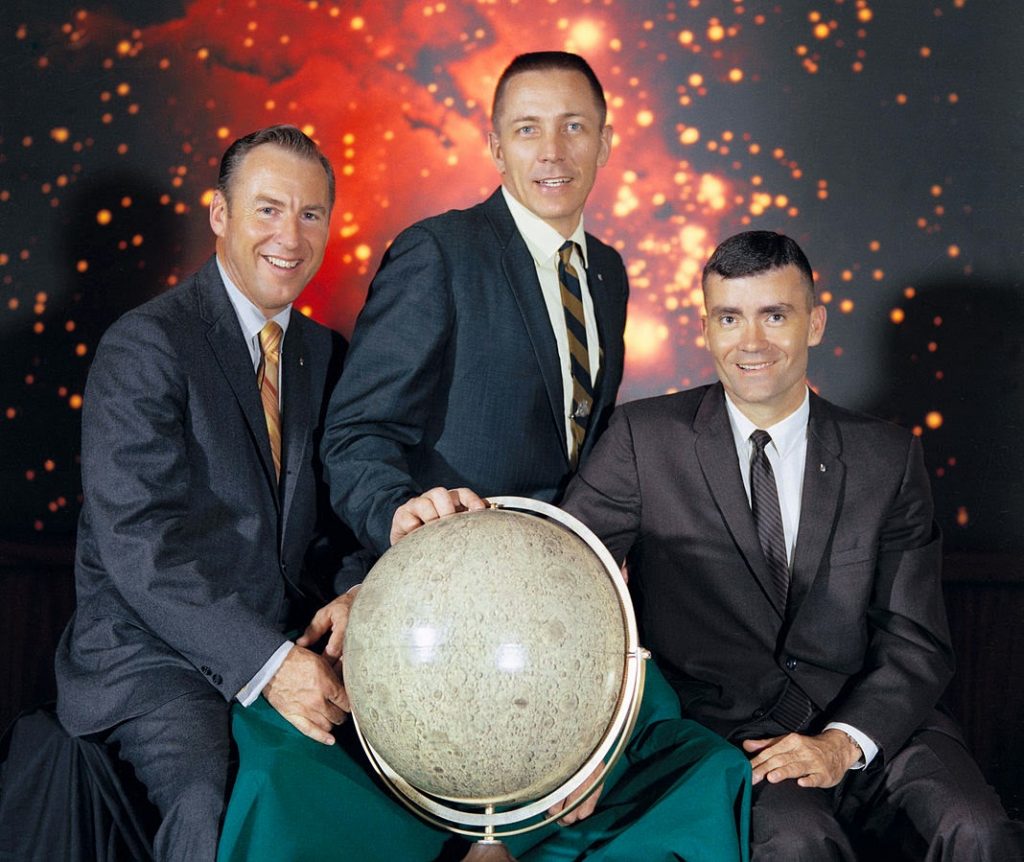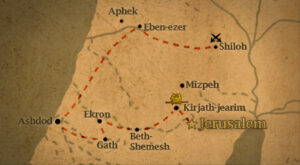The Apollo 13 lunar expedition suddenly turned into a survival mission when an explosion risked the lives of the crew, but turned out to be a successful failure. Before we examine the remarkable success accomplished by NASA, let’s travel back to the beginning of the mission. The main objective of Apollo 13 was to performed a lunar expedition. However, the crew encountered unexpected outcomes throughout the trip. The adventure of Apollo 13 lasted 143 hours and began on April 11, 1970, in Cape Kennedy, Florida. At 2:13 p.m., Apollo 13 was heading to the moon and its respective mission, when it experienced an explosion, then malfunctions, and subsequently doubts of ever making it back home alive.

During the first two days of the mission, the crew ran into minor surprises. But everything was looking as if Apollo 13 was the smoothest flight of NASA’s so far. A message came by Joe Kerwin, the capsule communicator, after 46 hours and 43 minutes, saying, “The spacecraft is in real good shape as far as we are concerned. We’re bored to tears down here.” That would be the last time somebody mentioned the word bored for a long time.1
At 55 hours and 46 minutes the crew finished a TV broadcast on how comfortable they were and that everything was fine in space. Nine minutes after the TV broadcast, a massive explosion occurred inside the spacecraft, causing a loss of electricity, light, and water. After the explosion, Apollo 13 was about 200,000 miles from Earth. The message was transmitted to Earth at 9:08 p.m., April 13, with the famous phrase, “Houston, we’ve had a problem.” James Lovell, the commander, told the ground that the main breaker was undervolted.2
The explosion left the crew in very bad shape, as they lost two of three fuel cells, which were the spacecraft’s prime source of electricity. Thirteen minutes after the explosion, Lovell saw through the window the final evidence of the catastrophe. “We are venting something out into the … into space,” Lovell reported to Houston. As Capcom Jack Lousma replied, “Roger, we copy you venting.” Lovell said, “It’s a gas of some sort.” The substance venting out was oxygen gas escaping at a high rate from the second and last oxygen tanks.3
An hour after the explosion, mission control sent a message, “we are now looking toward an alternative mission, swinging around the Moon and using the lunar module power systems because of the situation that has developed here this evening.” The crew was instructed to move to the lunar module, which would now be used as a lifeboat, and turn off completely the command module for re-entry. Meanwhile, the damaged Apollo 13 swung around the moon. The idea of landing on the moon was no longer an option for NASA. It was now a rescue mission.4
The crew and ground control were confronted with two problems to solve. First, getting the spacecraft and crew on the fastest route back home. Second, conserving consumables, power, oxygen, and water. The conservation of consumables began by shutting down the command module, which was only used as a bedroom. They also turned down all the systems in the lunar module, except for those required as life support, communication, and environmental control. For the first issue, after a great dealing of calculations and simulations at the Mission Control on Earth, they concluded that the Lunar Module’s engines could handle the requirements. Thus, the engines were fired to boost their speed another 860 fps, cutting the flight time by 10 hours.5

Finally, Apollo 13 rounded the Moon and began its journey back home. However, the problems were not entirely eradicated. The re-entry procedure required two more corrections. One was to align the spacecraft more towards the re-entry route. Moreover, the second issue was to fine tune the angle of entry, which had to be between the narrow range of 5.5 and 7.5 degrees. As the shuttle lacked power, the crew was forced to determine the altitude of the spacecraft manually. Normally the procedure would be routine; however, they experienced difficulties during the process, because the explosion had caused them to be surrounded with debris. Subsequently, they could not observe star sights, so the altitude of the shuttle became challenging to estimate. Mission control gave the answer to use the same strategy Apollo 8 used, in which the sun would be used as the alignment star.6
Just short of four hours before re-entry, Apollo 13 ejected the damaged Service Module. As the Service Module move away, Apollo 13 was able to see the damage. Two and a half hours before re-entry, Apollo 13 brought the command module back to life. As the system turned on, everyone aboard and at Mission Control, and around the world, had a sigh of relief. An hour later, the Lunar Module was also ejected. Mission control send a message, “Farewell, Aquarius, and we thank you.”6
The Apollo 13 Command Module carrying Jim Lovell, Fred Haise, and Jack Swigert, touch the Pacific Ocean on April 17, 1970 at 1:07 p.m. EST. Forty-five minutes later, USS Iwo Jima, recovery ship, came and brought the crew aboard. After 142 hours 54 minutes 41 seconds, Apollo 13 returned to Earth. The survival mission ended up being a successful failure, as nobody died and all came back to Earth alive from an almost impossible mission 200,000 miles from home.
- Office of Public Affairs, National Aeronautics and Space Administration, Apollo 13: “Houston we’ve got a problem,” Washington: Library Catalog, 1970. ↵
- Encyclopedia Britannica, s.v. “Apollo 13”, last modified September 7, 2017, https://www.britannica.com ↵
- Michael S. Rosenwald, “’Houston, we have a problem’: The amazing history of the iconic Apollo 13 misquote,” The Washington Post, April 2017, https://www.washingtonpost.com. ↵
- Nick Greene, “Apollo 13: A Mission in Trouble,” ThoughtCo., (2017). https://www.thoughtco.com. ↵
- Encyclopedia Britannica, s.v. “Apollo 13”, last modified September 7, 2017 https://www.britannica.com . ↵
- Nick Greene, “Apollo 13: A Mission in Trouble,” ThoughtCo., (2017). https://www.thoughtco.com. ↵
- Nick Greene, “Apollo 13: A Mission in Trouble,” ThoughtCo., (2017). https://www.thoughtco.com. ↵



65 comments
Michael Thomas
The article was interesting and informative. I remember seeing the movie Apollo 13 in my Texas history class in middle school, which detailed the account of this event. If it was not for ground control’s quick thinking, the Apollo 13 crew would have been lost. Even though the Apollo 13 failed to land on the moon, they still succeeded by being able to slingshot around the moon and return back to Earth alive.
Sebastian Castro Ramos
This story about the Apollo 13 mission is new to me. I didn’t know that there had been a mission to get back to the moon, and that it turned out to be a rescue mission in the end. I wonder what caused the explosion on the ship that completely turned around this mission. I can’t imagine what was happening through those astronaut’s minds all that time they spent from the explosion until they were picked up by the USS Iwo Jima piked them up.
Erik Shannon
This was a very good and interesting article. I had previous knowledge on Apollo 13 before reading this article. The article is very informative and it gives all the information in chronological order. Apollo 13 was a very dangerous mission with very dangerous conditions. It is a good thing they made it back safe. Overall, this is a very good article.
Deanna Lummus
This article was the first I read about this whole subject. I had always heard of it but never really read anything on it. I still wows me that this even happened though. No one died and this ended up being a happy accident in a sort of way. They were able to look back on this and make sure future missions went as planned. Trial and error are always something that is part of the process but with space travel the stakes are literally out of this world. I am amazed at how the crew even kept it together. Also this article was very well written and clear enough for someone who has no real clue about this subject. I loved this!
Edward Cerna
This was a really well written and informative article. The story of Apollo 13 has always interested me and I am glad to see an article on here about it. I liked the information you included and the research you did was done really well. It must have been so difficult to try and land manually and just thinking about it seems nearly impossible. I am happy that no one perished during that incident. great article and good job.
Carlos Aparicio
This article was really well written and very descriptive. It’s really unimaginable how something so catostrophic could happen to such a huge mission like Apollo 13. In my opinion, something like this would only happen in a movie. To sum it up, this article was very detailed and made it seem like it was a popular book!
Mark Martinez
An extremely well written and put together article that stayed interesting all the way through. It almost felt like watching movie as I was reading it. I can only imaging what it would be like to be in space on the Apollo 13 and hear the explosion. How they were able to keep composure long enough to figure out a way home is something I couldn’t do.
Alise Balderas
Such a great article, especially the title! I always knew of Apollo 13, but never to this extent. This page has taught me so many interesting and new things! What I find amazing is how intelligent NASA and the astronauts are and how technology has advanced so much that it allows us to discover and experience so many things. This article was intriguing throughout!
Alexis Renteria
Great job writing and providing the correct information on Apollo 13. Going to space and there being a possibility that you wont be able to comeback is one of my greatest fears. In the article, you did not show any evidence that the crew was worried or terrified of the situation however I’m sure that all the things going wrong definitely gave them a sense of lost hope. However, the fact that they were still able to report back calmly and solve most of the problems shows how skilled these astronauts were.
Christine Sackey
I defiantly learned a lot about the mission of reading this. I did not know that were so many problems that occurred during their mission. It is incredible that they were able to figure it out and find another route home. It must have been very stressful for NASA and for the astronauts as well. I can not imagine being in space and realizing that you might run out of basic supplies and you are far away from Earth. Overall, cool article.